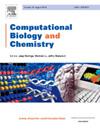NABP-LSTM-Att: Nanobody–Antigen binding prediction using bidirectional LSTM and soft attention mechanism
IF 3.1
4区 生物学
Q2 BIOLOGY
引用次数: 0
Abstract
In vertebrates, antibody-mediated immunity is a vital component of the immune system, and antibodies have become a rapidly expanding class of therapeutic agents. Nanobodies, a distinct type of antibody, have recently emerged as a stable and cost-effective alternative to traditional antibodies. Their small size, high target specificity, notable solubility, and stability make nanobodies promising candidates for developing high-quality drugs. However, the lack of available nanobodies for most antigens remains a key challenge. Advancing the development of nanobodies requires a better understanding of their interactions with antigens to enhance binding affinity and specificity. Experimental methods for identifying these interactions are essential but often costly and time-consuming, posing challenges for developing nanobody therapies. Although several computational approaches have been designed to screen potential nanobodies, their dependency on 3D structures limits their broad application. This research introduces NABP-LSTM-Att, a deep learning model designed to predict nanobody–antigen binding solely from sequence information. NABP-LSTM-Att leverages bidirectional long short-term memory (biLSTM) to capture both long- and short-term dependencies within nanobody and antigen sequences, combined with a soft attention mechanism to focus on key features. When evaluated on nanobody–antigen sequence pairs from the SAbDab-nano database, NABP-LSTM-Att achieved an AUROC of 0.926 and an AUPR of 0.952. Considering the significance of nanobody-based treatments and their prospective uses in immunotherapy and diagnostics, we believe that the proposed model will serve as an effective tool for predicting nanobody–antigen binding.

NABP-LSTM-Att:基于双向LSTM和软注意机制的纳米体抗原结合预测
在脊椎动物中,抗体介导的免疫是免疫系统的重要组成部分,抗体已成为迅速扩大的一类治疗药物。纳米抗体是一种独特类型的抗体,近年来作为一种稳定且经济的传统抗体替代品而出现。纳米体的小尺寸、高靶向特异性、显著的溶解性和稳定性使其成为开发高质量药物的有希望的候选者。然而,缺乏可用于大多数抗原的纳米体仍然是一个关键的挑战。推进纳米体的发展需要更好地了解它们与抗原的相互作用,以提高结合亲和力和特异性。确定这些相互作用的实验方法是必要的,但往往是昂贵和耗时的,这给开发纳米体疗法带来了挑战。虽然已经设计了几种计算方法来筛选潜在的纳米体,但它们对3D结构的依赖限制了它们的广泛应用。本研究引入了NABP-LSTM-Att,这是一种深度学习模型,旨在仅从序列信息预测纳米体抗原结合。NABP-LSTM-Att利用双向长短期记忆(biLSTM)来捕捉纳米体和抗原序列的长期和短期依赖性,并结合软注意机制来关注关键特征。NABP-LSTM-Att对来自SAbDab-nano数据库的纳米体抗原序列对进行评价,AUROC为0.926,AUPR为0.952。考虑到基于纳米体的治疗的重要性及其在免疫治疗和诊断中的应用前景,我们相信所提出的模型将作为预测纳米体抗原结合的有效工具。
本文章由计算机程序翻译,如有差异,请以英文原文为准。
求助全文
约1分钟内获得全文
求助全文
来源期刊

Computational Biology and Chemistry
生物-计算机:跨学科应用
CiteScore
6.10
自引率
3.20%
发文量
142
审稿时长
24 days
期刊介绍:
Computational Biology and Chemistry publishes original research papers and review articles in all areas of computational life sciences. High quality research contributions with a major computational component in the areas of nucleic acid and protein sequence research, molecular evolution, molecular genetics (functional genomics and proteomics), theory and practice of either biology-specific or chemical-biology-specific modeling, and structural biology of nucleic acids and proteins are particularly welcome. Exceptionally high quality research work in bioinformatics, systems biology, ecology, computational pharmacology, metabolism, biomedical engineering, epidemiology, and statistical genetics will also be considered.
Given their inherent uncertainty, protein modeling and molecular docking studies should be thoroughly validated. In the absence of experimental results for validation, the use of molecular dynamics simulations along with detailed free energy calculations, for example, should be used as complementary techniques to support the major conclusions. Submissions of premature modeling exercises without additional biological insights will not be considered.
Review articles will generally be commissioned by the editors and should not be submitted to the journal without explicit invitation. However prospective authors are welcome to send a brief (one to three pages) synopsis, which will be evaluated by the editors.
 求助内容:
求助内容: 应助结果提醒方式:
应助结果提醒方式:


